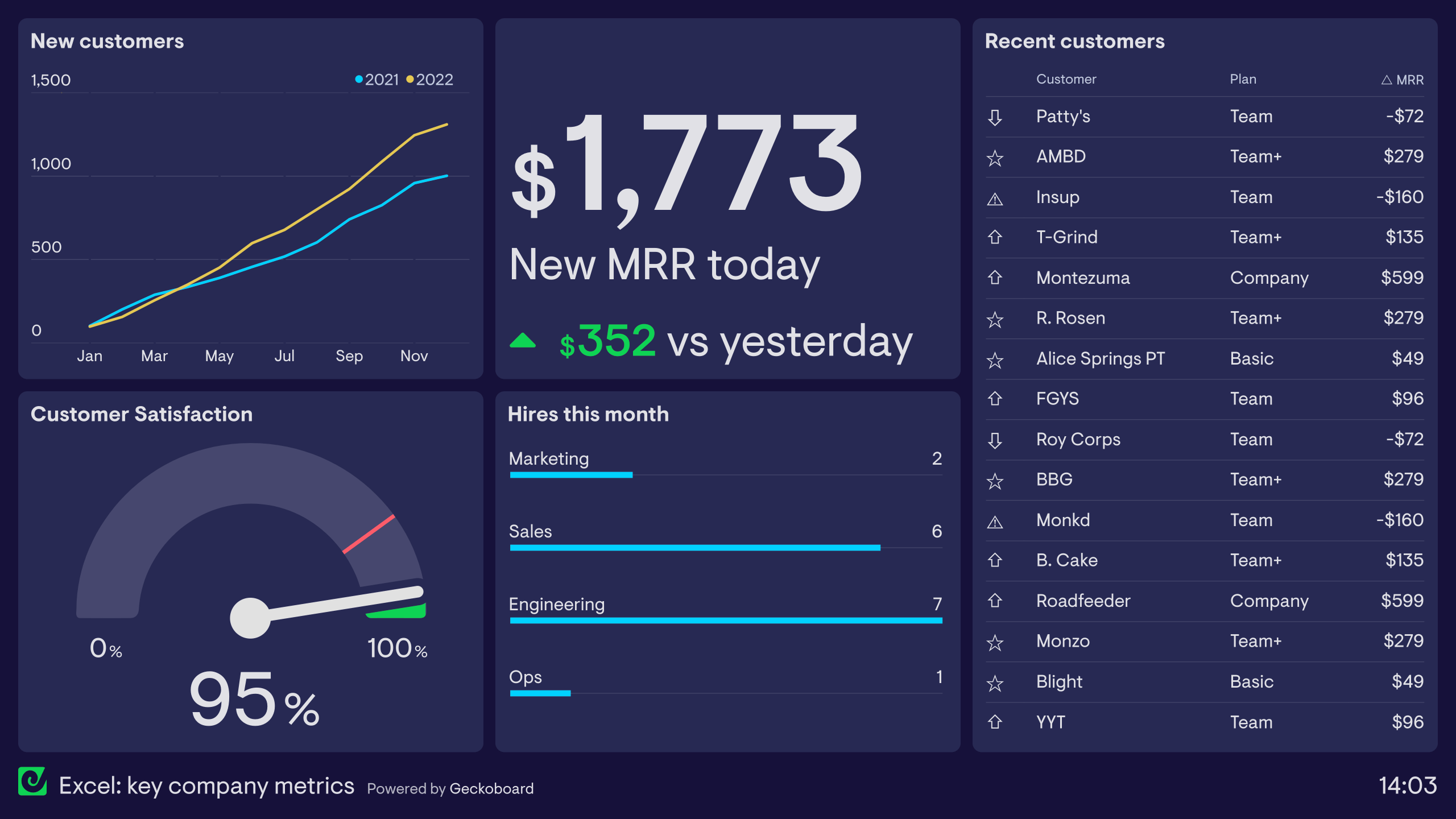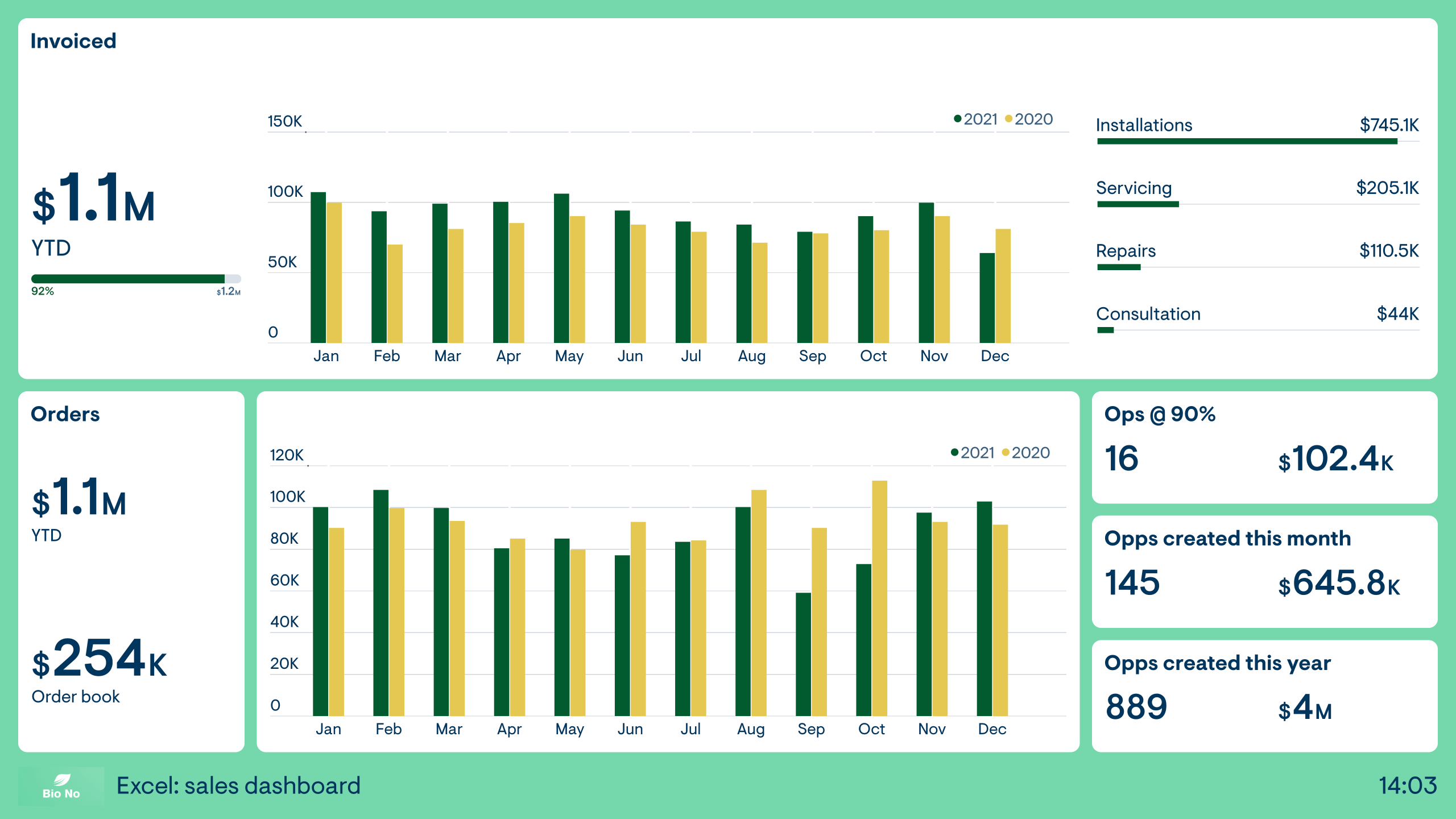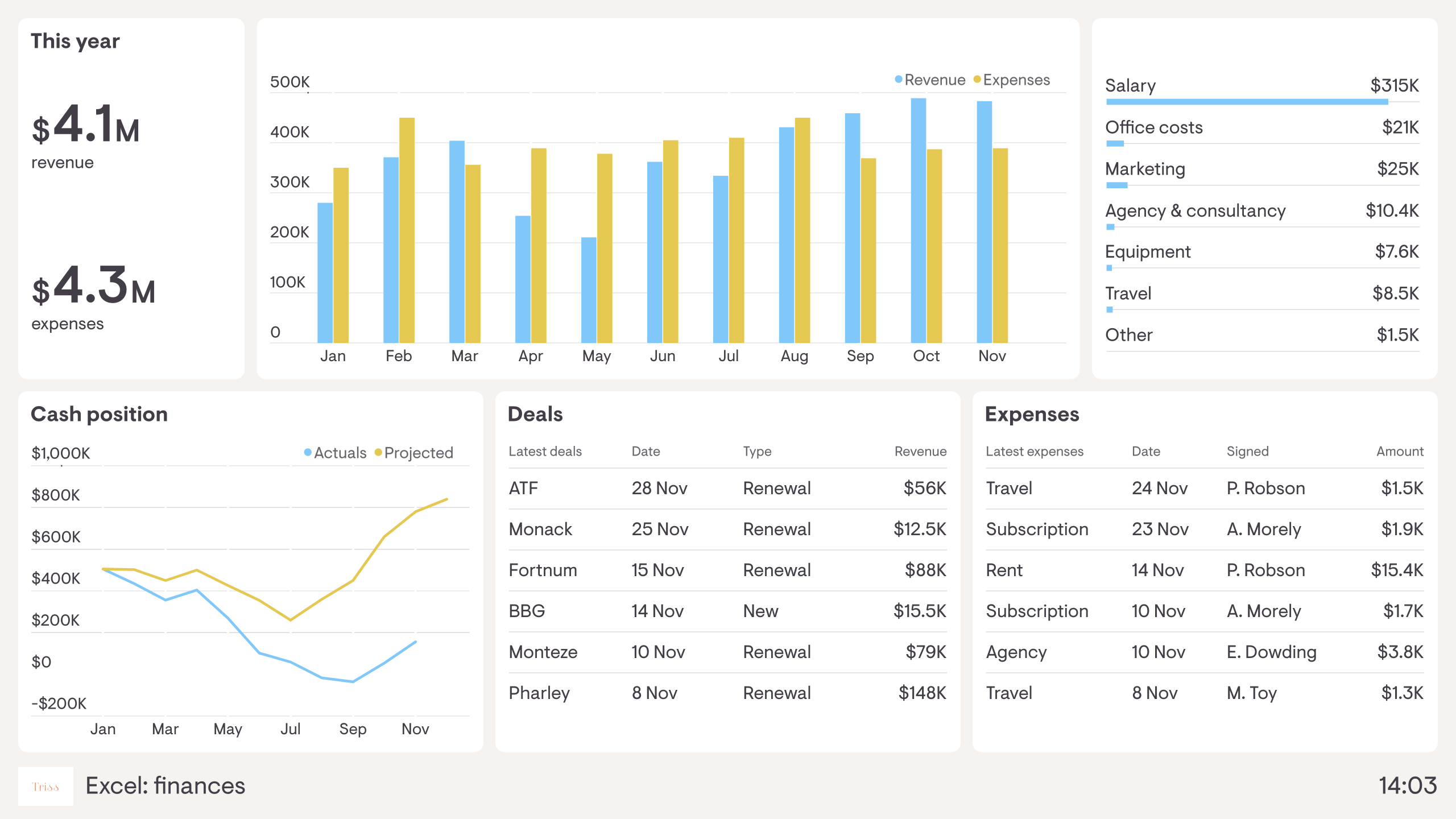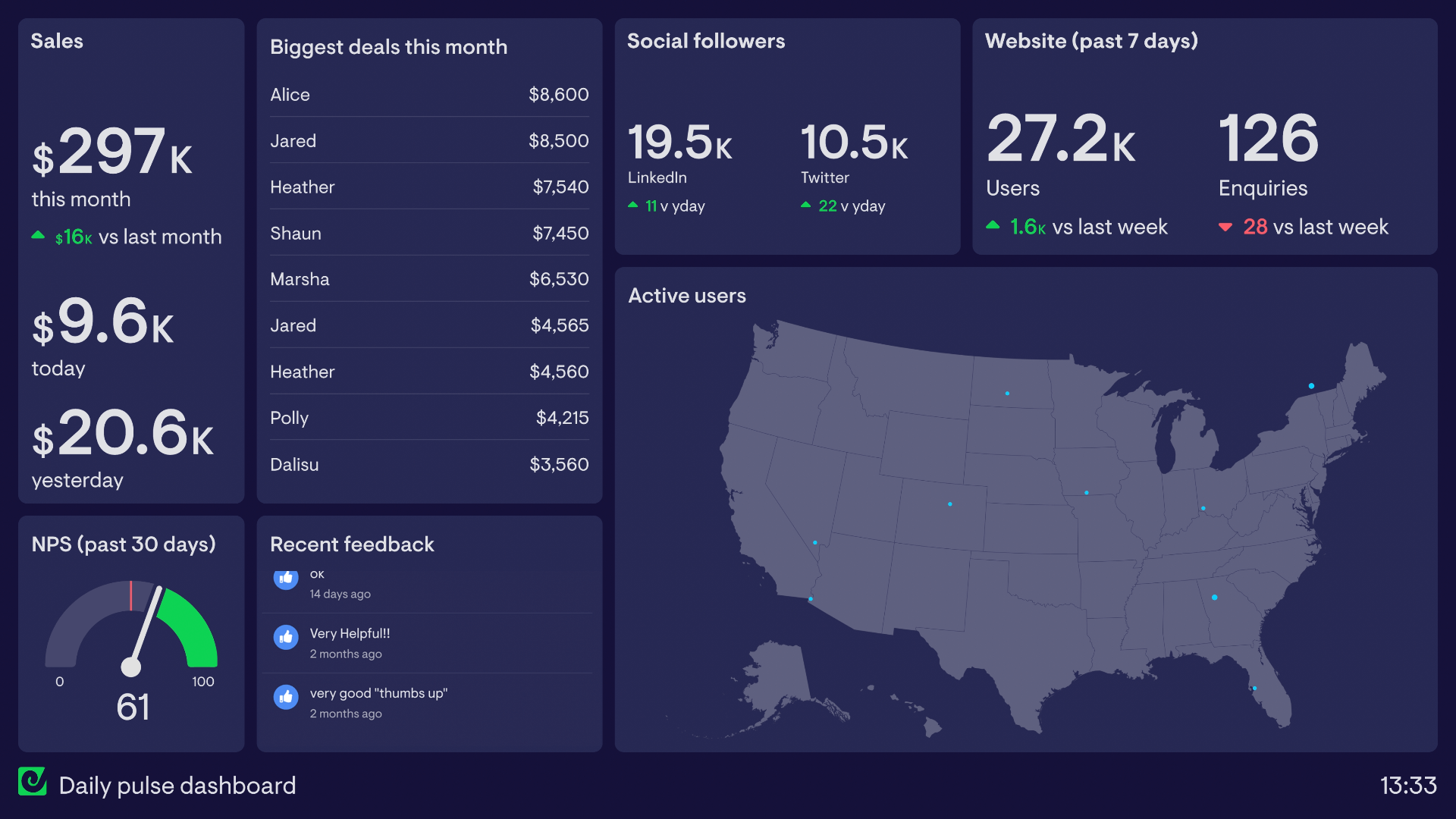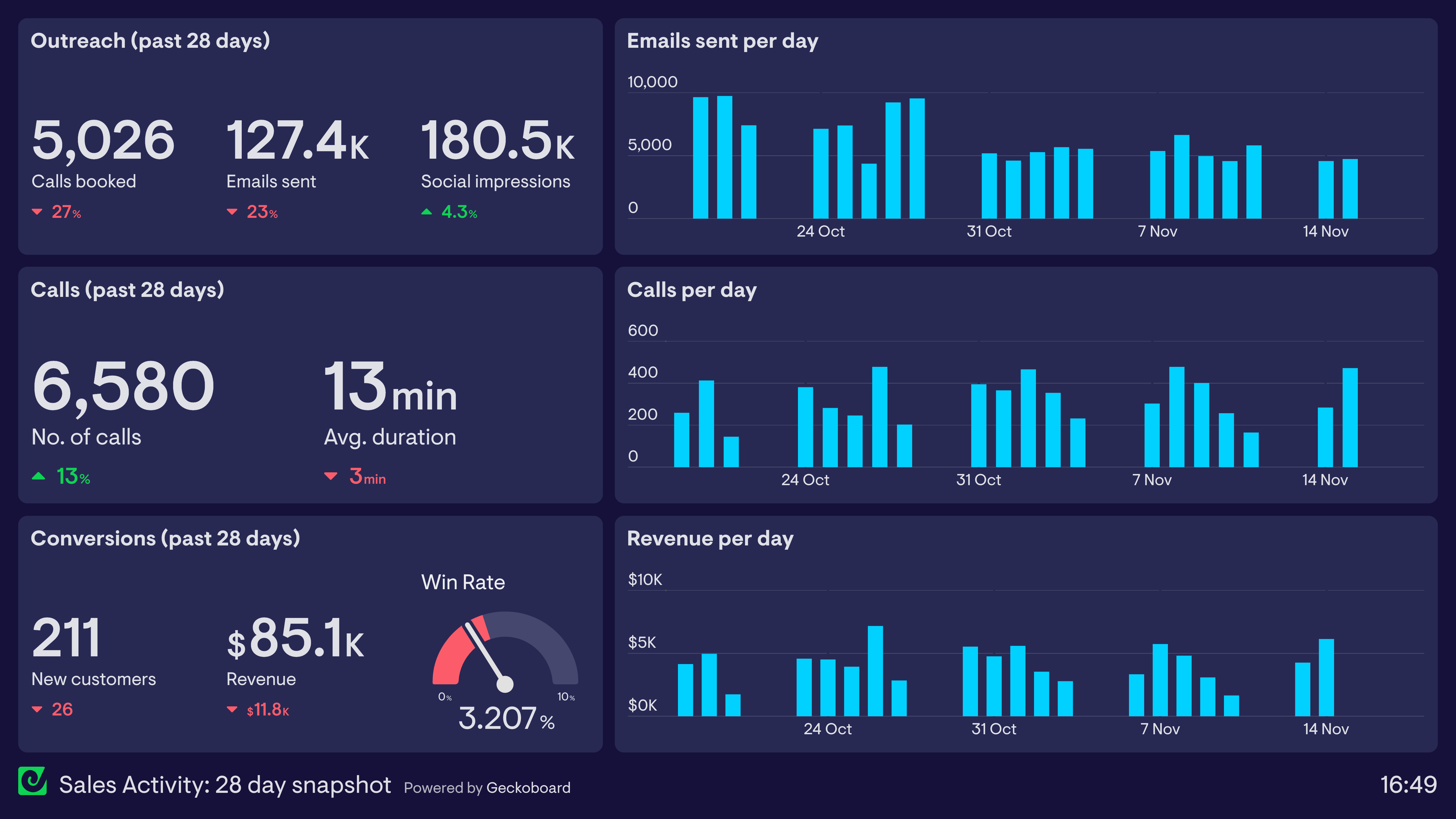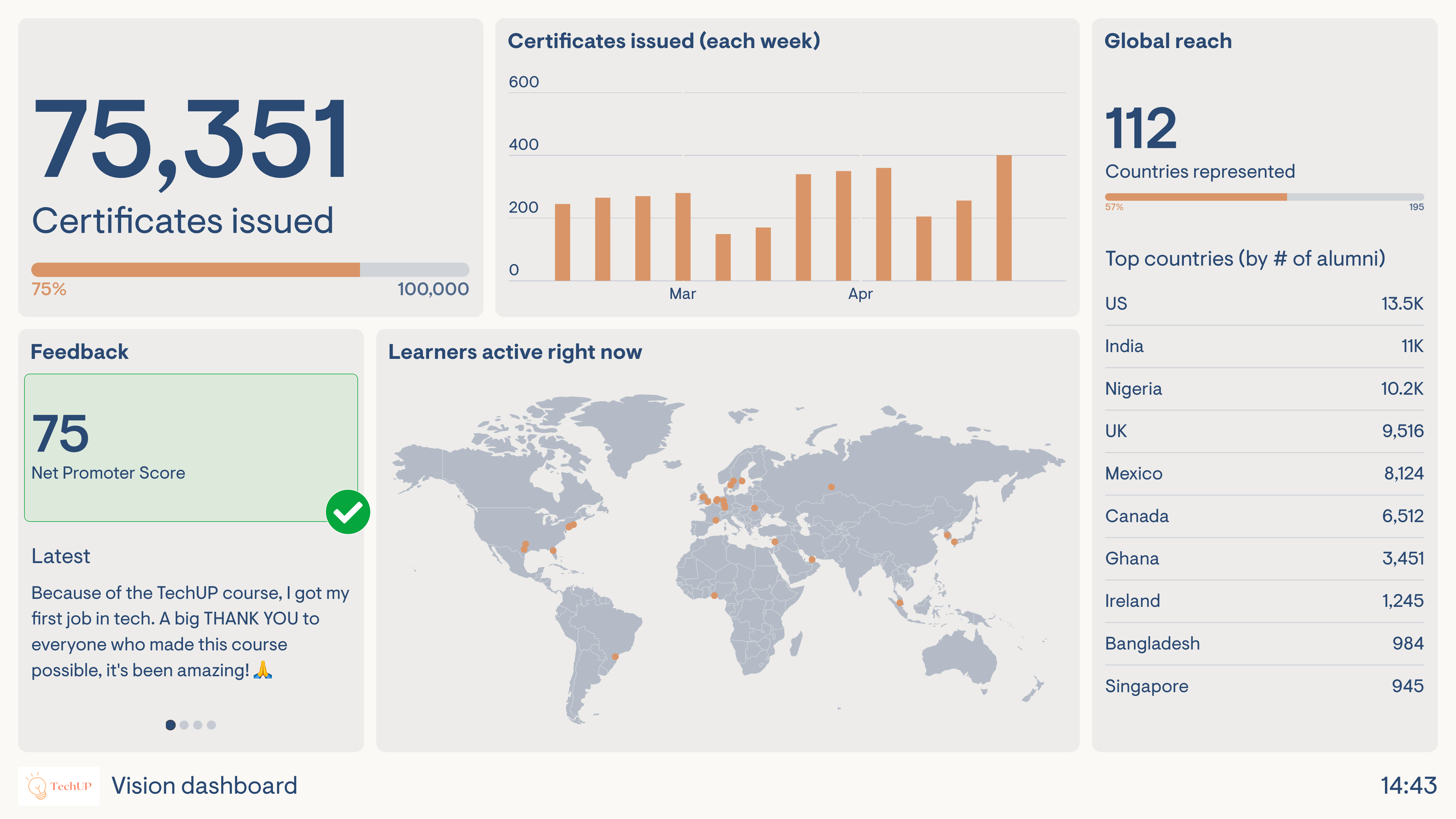Microsoft Excel dashboard samples and templates
Excel dashboards enable users to visualize their most important Excel data, so KPIs can be viewed by everyone, at a glance.
Excel spreadsheets themselves are a popular way of sharing key metrics with team members and stakeholders. However, using spreadsheets to communicate fast-moving metrics has several major drawbacks:
- Readers may not know which numbers in the spreadsheet are the most important
- The design is often uninspiring
- Downloading and opening a spreadsheet takes time and effort
By the time people look at the spreadsheet the information may be out of date.
In contrast, a wall-mounted Excel dashboard makes important spreadsheet metrics easy for teams to access and understand. And because the dashboard is live, it ensures that important information is seen before it’s out of date.
Examples of an Excel dashboard
Company KPI dashboard
This dashboard visualizes high-level company KPIs from a small SaaS company. All the raw data on this dashboard comes from a single Excel file uploaded to Dropbox. Any saved changes to the Excel file are synced with the dashboard automatically, and this ensures that only up-to-date information is displayed to the team.
As a result, everyone in the company has a real-time view of company performance. They have a clear view of the company’s progress towards its goals (in the form of new customers and new Monthly Recurring Revenue – MRR). They also can keep track of important health metrics like Customer Satisfaction (CSAT). And if any of these metrics suddenly change, the team will be aware, meaning they can investigate and take action.
Focus area
Growth metrics, health metrics
Who looks at it?
Everyone
How often?
Every day
- ExcelGoogle SheetsSpreadsheets
Sales dashboard
This dashboard focuses on sales KPIs across the financial year. The Sales team is responsible for generating new orders, as well as seeing that invoices are paid when the work is completed. As a consequence, the team needs to stay aware of metrics related to both order and invoices.
The dashboard also shows metrics related to sales activity higher up the funnel, in the form of new opportunities and opportunities at 90% (i.e. those which are expected to convert very soon.)
Like all the examples on this page, the data in this dashboard is generated in real-time from a single data source – an Excel file. It brings the data together in one place, so the Sales team can become more aware of big-picture, company trends.
Focus area
Invoices, orders, sales pipeline
Who looks at it?
CEO, Sales team
How often?
Several times a week
- ExcelSpreadsheetsGoogle Sheets
Finance dashboard
This dashboard visualizes company finances, so everyone in the business can stay up to date on the financial health of the organization. It tracks revenue, expenditure and the overall cash position of the company. As we can see, it has been a tough year, with revenue not matching initial projections.
The benefit of visualizing financial KPIs like this is that everyone has a clear understanding of the company’s financial projections. This means the Finance Director or CEO can spend less time explaining the basics of financial performance, and more time explaining goals, priorities and overall company direction.
Focus area
Revenue, expenses, cash position
Who looks at it?
CEO, Finance team, everyone
How often?
Several times a month
- ExcelGoogle SheetsSpreadsheets
